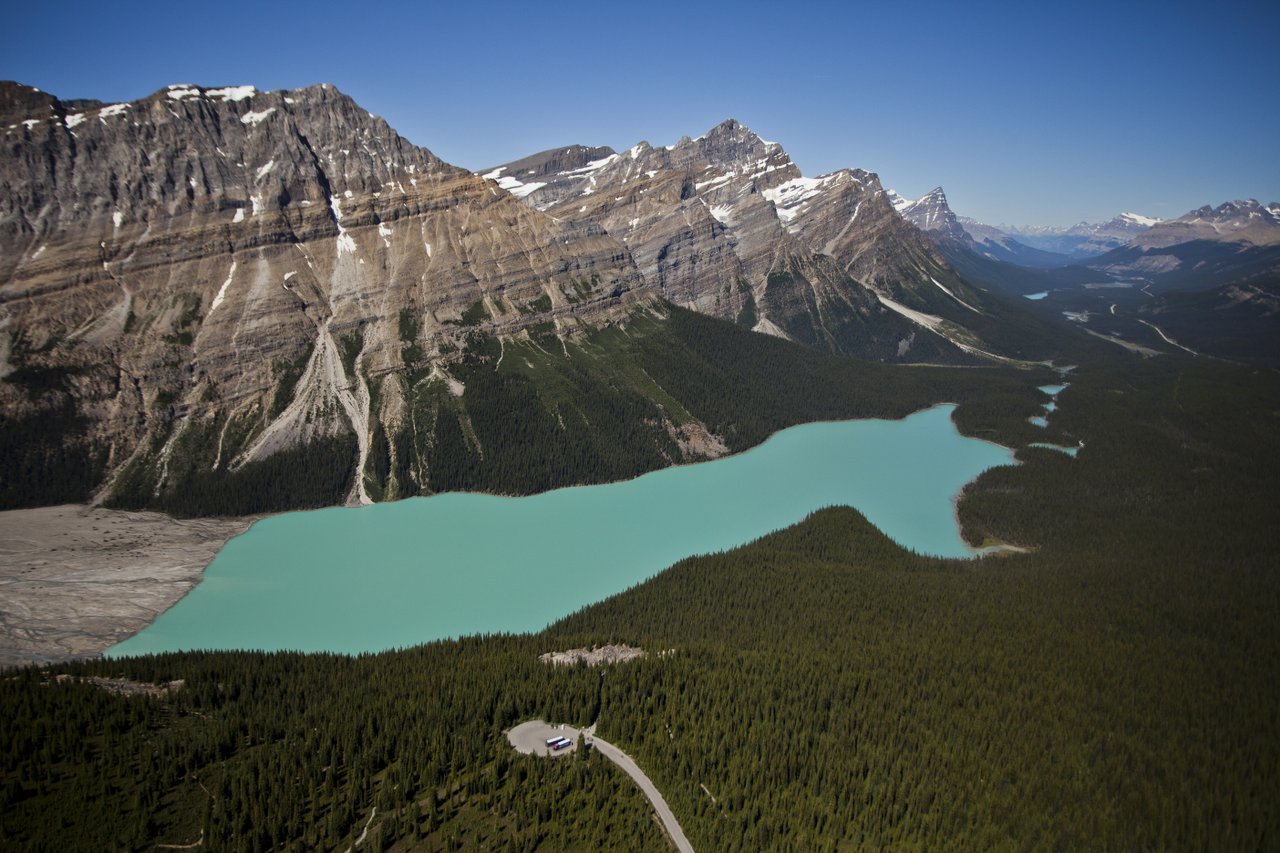
Want to experience something truly surreal? We’re talking genuinely life-affirming, awe-inspiring, jaw-dropping sights that will forever be etched into your memory. See everything you possibly can in the Canadian Rockies.
Hike it, drive it, sit on a solitary pier tearing up at the profound beauty of it all; fear this immense pocket of untamed nature and feel its countless microclimates as you hop from one stop to the other. Experience as much as you can while immersed in one of the most special parts of the world. It will change you, I promise.
Even if you’re only there for a quick snapshot of the incomparable beauty of these (usually) snow-capped mountains. It’s the definition of a transformative travel experience, framed by Canada’s famously friendly locals, undisturbed wildlife, exceptional food, rich history, and the occasional spot of partying.
TrekAmerica
That’s exactly what I did on TrekAmerica’s 11-day “Glaciers and Grizzlies” small group tour. Packed into a single van with nine other travellers – aged early 20s to early 30s – we started in Vancouver and worked our way around in a loop – bonding in Banff, adventuring in Jasper, and partying in Whistler. Numerous stops in between (some planned, some unplanned) showcased the absolute majesty of the Canadian Rockies, from sleepy sunrise hikes to perspective-shifting glacier walks and tremendous drives.
In just 11 days, TrekAmerica was able to give me what I feel is a comprehensive first-timers experience of the Canadian Rockies, ducking in and out of the many stops – whether it be for a few hours or a few days – that make up one of the best road trips I could have ever asked for.
I’m now confident enough to stamp these as the most important stops for a first-timer looking to get a decent overview of the Canadian Rockies. Granted, I’m still yet to properly explore Canmore, and would love to see more of Squamish, but the below is a good idea of what to expect.
Do note that I went late May/early June, which is one of the first itineraries in this tour’s season. It wasn’t quite the heart of summer yet, so many of the lakes were still half-frozen over and the wildlife wasn’t as active as it would have been had I chosen a couple of weeks later.
Although I had a truly unforgettable time, and our tour guide – the incredibly knowledgeable and relatable Jordan – threw in a lot of seemingly unplanned stops that weren’t listed on the itinerary (some of them are included below), if you want to make the most of it, go later in the season, which for 2020 starts in June and ends in September.
Vancouver
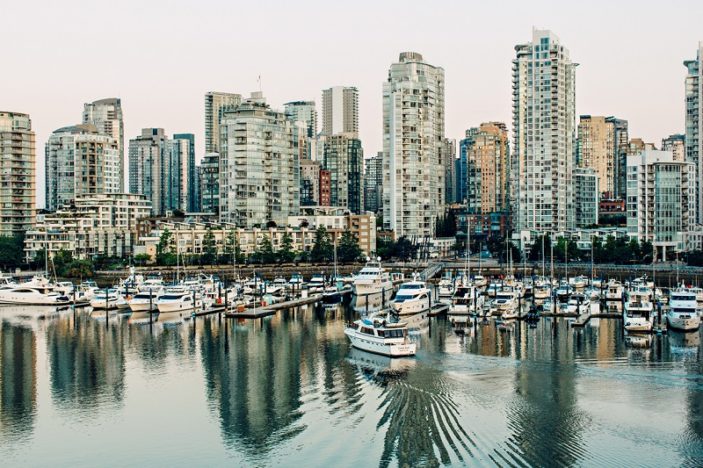
If you want to let someone else do the organising while you just show up (that is, opt for TrekAmerica’s tour), the worldly city of Vancouver will be your starting point. If – like me – you’ve picked the “Plus” version of the tour (which is basically the structure as the camping, but with mid-range hotels), then it’d be wise to show up a day early and pay for an extra night at the tour’s chosen accommodation.
For me, it was the Accent Inn just outside of Vancouver city limits, in the city of Richmond. It’s about a 10 minute (free) shuttle from YVR airport and is a good indication of the type of lodging you can expect from the Glaciers and Grizzlies Plus option – comfortable, three-star and perfectly serviceable.
Note that other hotels on the trip included the Doubletree by Hilton in Kamloops, and the cute, independent Pine Bungalows in Jasper.
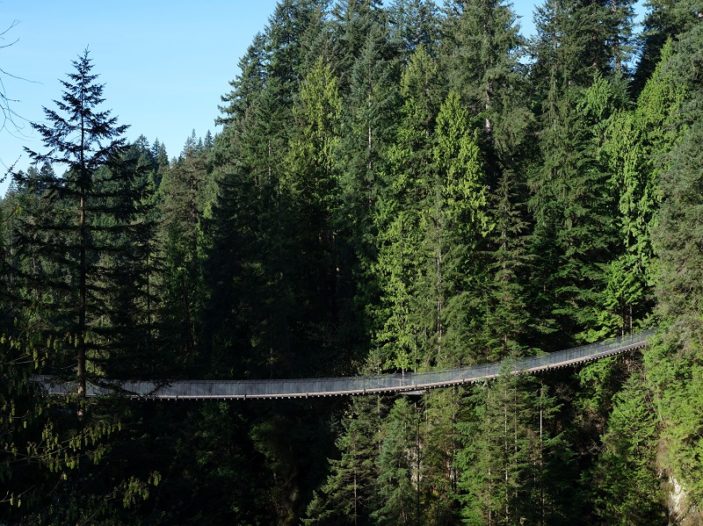
You’ve made the smart choice to rock up a day early so take some time to rest and then head into the city. There’s plenty to do in Vancouver (check out this food guide I wrote for International Traveller if you want to eat well), but exploring the beautiful waterfront area, jogging through Stanley Park, exploring historic Gastown, and eating your way across the trendy Granville Island would be some of the better decisions for an introduction.
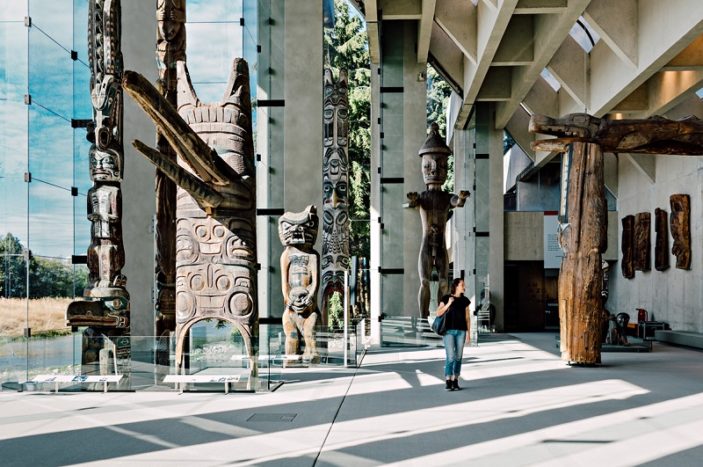
If you’re into museums, do not miss out on the incredible – both physically and conceptually – Museum of Anthroplogy. It’s fast become one of my favourite museums in the world, with thousands upon thousands of artefacts from just about every tribe and culture you can think of. You’ll spend hours here, and if that bites into the evening, stick around and watch the sunset from the museum’s backyard.
Of course there’s also the tourist essentials of Capilano Suspension Bridge Park and Grouse Mountain.
Note that Glaciers and Grizzlies will also end in Vancouver, so there’s the option to tack on a few more days post-tour, which is probably a better idea since the friends you make on the tour will probably be doing the same thing. Places like Capilano and Grouse are much more fun with other people.
Revelstoke
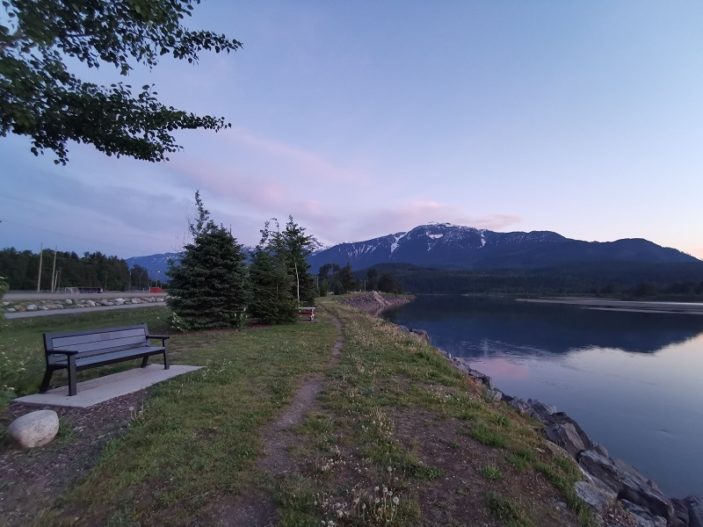
Coming from British Columbia and making your way to the Alberta side of the Canadian Rockies will inevitably bring you through Revelstoke. And it’s a stop worth making, if even for a night.
This will be the first stop for the TrekAmerica tour, resting one night after a long drive day.
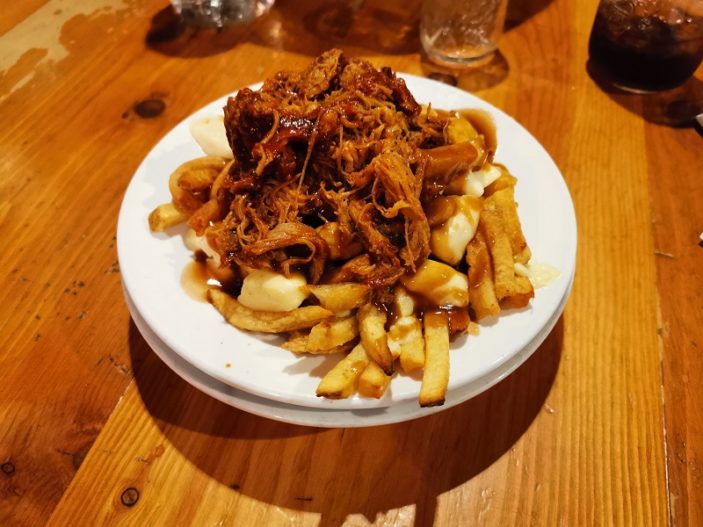
The often overlooked town is a perfect primer to all the outrageously beautiful scenes that await as you venture deeper into the Rockies. Here you’ll fine some respite from all that driving with excellent food, a great craft beer scene, and serene nature walks.
Although they say the best poutine is found on the East Coast of Canada, you can get some excellent loaded versions of the national comfort dish at the town’s most popular pub: The Village Idiot. It’s cosy, welcoming, full of locals and can get quite rowdy as the night goes on. Plus, they’ve got some enormous pizzas on the menu, any of which will go down smoothly with a few rounds of local craft beer.
Bow Lake
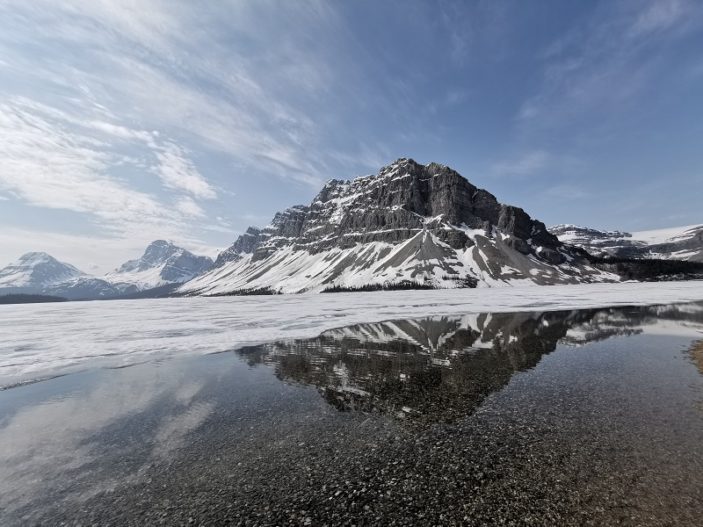
The Icefields Parkway (Highway 93) is one of the greatest drives in the world, shattering any pre-conceived notion of what a scenic stretch of road should be. The robust, fully formed mountains and glaciers that lead into the heart of Alberta abound, hiding all types of wildlife that regularly pop out of the tree line. The scale of nature truly hits you each and every time you look out the window.
One of the first quick stops my TrekAmerica tour made, just off the highway, was the stunning Bow Lake. The rim of this gorgeous lake offers an incredibly peaceful walk. It’s one of the largest in Banff National Park, sitting at an elevation of around 1,920m just 30 minutes north of the famous Lake Louise.
Meltwater is fed from the Wapta Icefield and flows around the base of Bow Summit, which gives you these exceptionally clear and reflective aquamarine waters – it’s a perfect photo opp and, if the weather is right, picnic spot. It’s also where we ticked off our very first bear sighting, joining other vehicles on the road as a black bear and its cub milled around the shrubs.
Moraine Lake
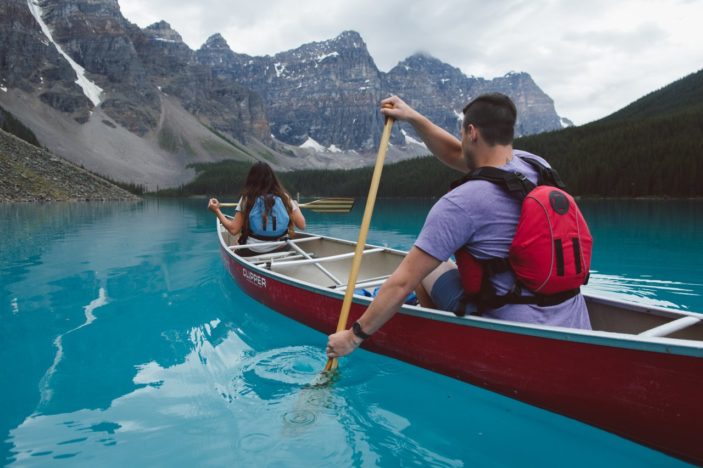
This is one of the busier lakes in Canada and certainly one of the most well-known. The various mountains, waterfalls and rock piles that make up the soaring Valley of the Ten Peaks frame the bright blue glacier-fed lake, creating what is perhaps the most quintessential scene of the Canadian Rockies. Watch in awe as the mountains cradle a massive body of water that changes in intensity throughout the year, as the glaciers around it melt.
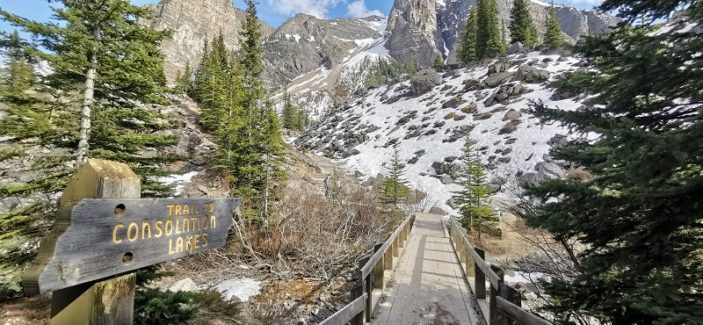
Depending on when you visit, you’ll either spot people carefully skating across the frozen lake, canoeing in the pristine waters, or jumping off a massive branch that sticks out from nearby rocks for the ultimate (and ultimately freezing) swim. Scramble around the lakeside cliff face to find your best angle, because the photos that will come out of this stop will blow your (and everyone else’s) mind. If you’ve got longer, hike around in the pure mountain air – there’s plenty to see in this especially epic part of the Canadian Rockies.
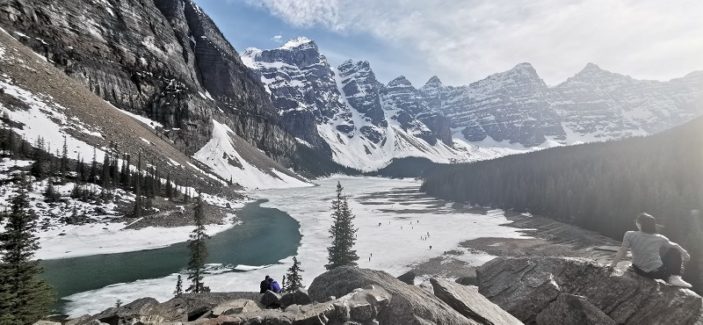
Thankfully, there’s over an hour to spend here if you’re on the TrekAmerica tour, which is enough to take in the slightly overwhelming beauty of it all.
Peyto Lake
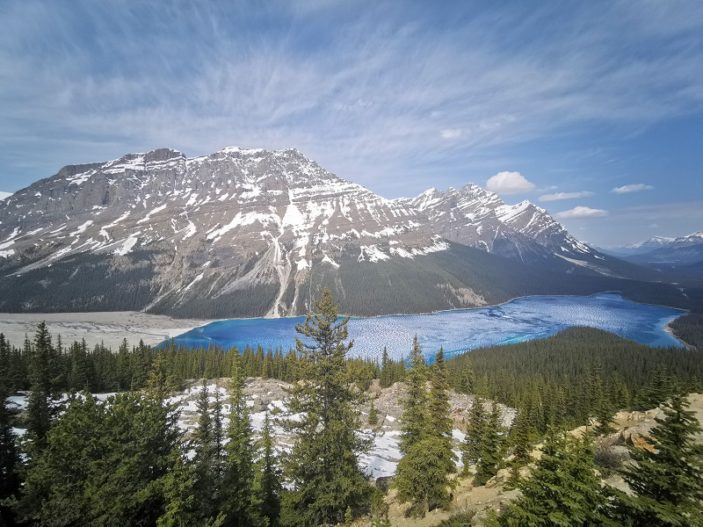
Glowing azure blue waters await at the spectacular Peyto Lake, the viewpoint for which is amongst the most postcard-worthy sights in the Canadian Rockies. Like most of these glacier-fed lakes, it’s just off Icefields Parkway, about 40km north of the iconic Lake Louise. Glacier flour from Peyto Glacier flows into this oddly narrow body, which evidently comes in large quantities to give the lake its milky glow.
Recent improvements have made the gorgeous walk up to the viewpoint a bit more manageable – although there’s one downwards incline that can be very slippery, so bring snow shoes. Do note that if you have more time you should follow the Bow Summit Lookout Trail for equally great views without the crowd.
Banff
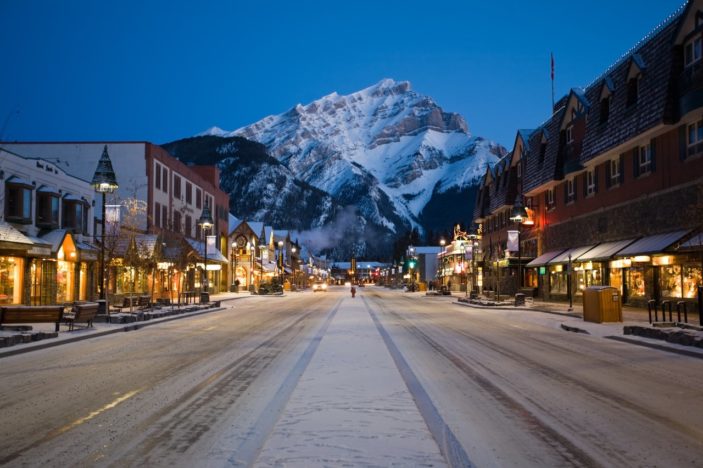
By the time you arrive in the resort town of Banff you’re most likely going be all awed-out, and hard to impress. Things couldn’t possibly get any better, right? Wrong.
With Mt. Cascade and Mt. Rundle framing what is Canada’s highest town (1,383 metres above sea level, so drink plenty of water), Banff is a restorative stop that has more than enough to fill an itinerary for several days, and then some. Although there are only a few streets that make up this sparsely populated (7,847 as of the 2016 census) town, you’ve got plenty of lively bars, celebrated restaurants, art galleries, and hiking trails to keep you stimulated.
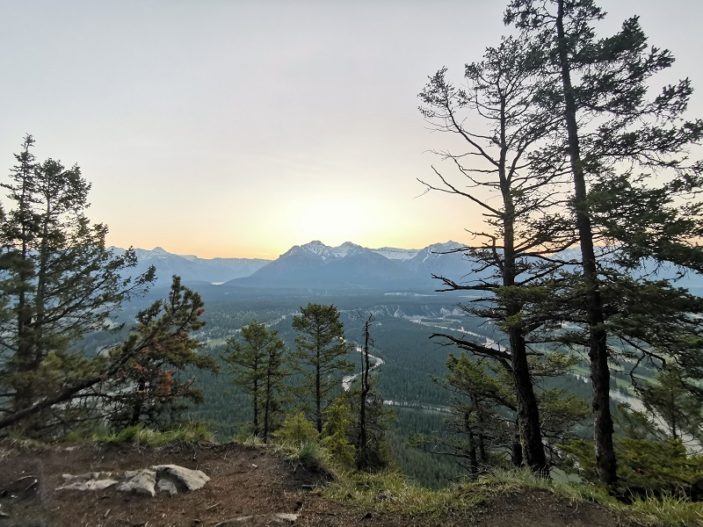
One of the more essential (and easy) hikes from town is the switchback-heavy Tunnel Mountain Trail, which is only 300 metres in elevation and takes around 2-3 hours on a round-trip (if you do it properly). Wake up early and time this one for sunrise, which is exactly what I did at Jordan’s encouragement – absolutely no regrets.
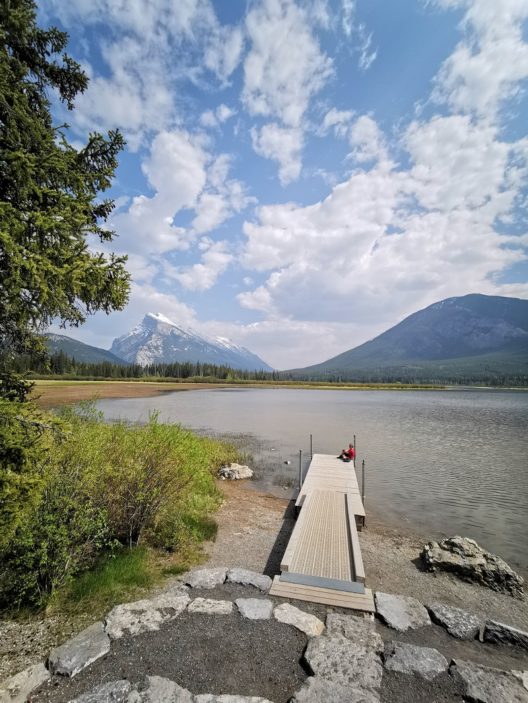
I also recommend a quick walk out to Vermillion Lakes, just a bit out of town past the train tracks and through a small forested area (check for any previous bear sightings – I didn’t see any and I walked alone, albeit nervously). You’ll eventually reach a solitary pier on the large and peaceful lake, notable for the spectacular perspective of Mt. Rundle it offers. Walk along this side and the unique curves, cracks and slants that define Mt. Rundle will be impressed on your mind forever.
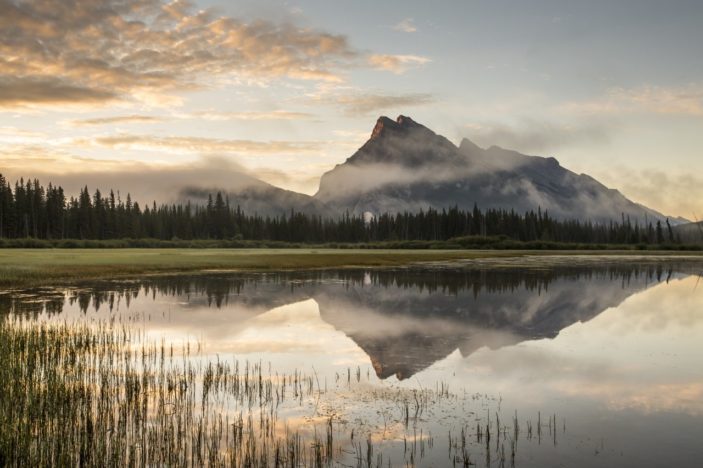
In terms of dining and nightlife, you’re going to want to pace yourself; there’s plenty to eat, for all budgets. Gourmands should be paying attention to The Bison, Eden and Sky Bistro (if the famous Banff Gondola is operating), while vegetarians should go straight for Nourish, one of the best health-conscious eateries in Alberta (and it’s nicely priced too).
Budget-seekers should take to BeaverTails for cheap desserts, Evelyn’s makes some great coffee for pre-wilderness fuel, The Fudgery is a must for those who really want a strong sugar hit (get anything with ‘maple’ in its name), and Aardvark is the go-to for late-night pizza after stumbling out of rough-and-tumble Wild Bill’s (where karaoke, craft beer and mechanical bull-riding rule the night).
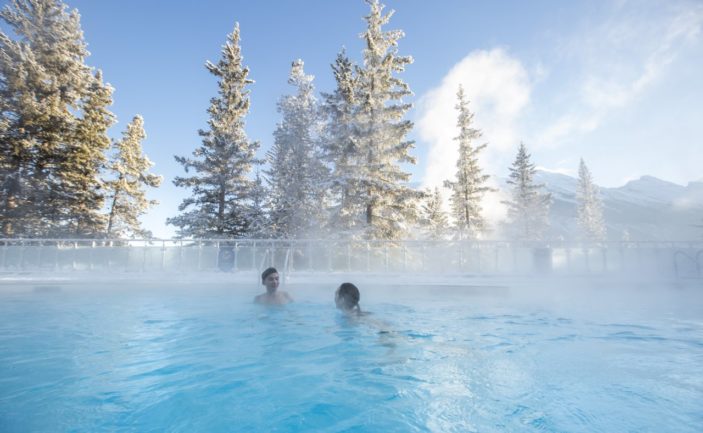
If you’re in a group, head on up to the historic Banff Upper Hot Springs which has been around since 1883 and even offers 20th century swimming costumes for hire.
Lake Louise
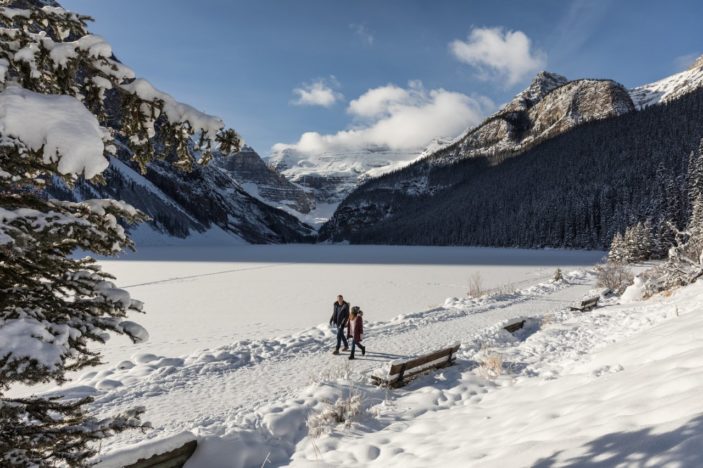
Few scenes are as emblematic of Banff National Park as Lake Louise. The impossibly blue hamlet is surrounded by soaring peaks and peaceful hiking trails, running from the historic and stately >Fairmont Chateau Lake Louise on its eastern shore, right around to an area which can be trekked further for those wanting to visit the serene Lake Agnes Tea House.
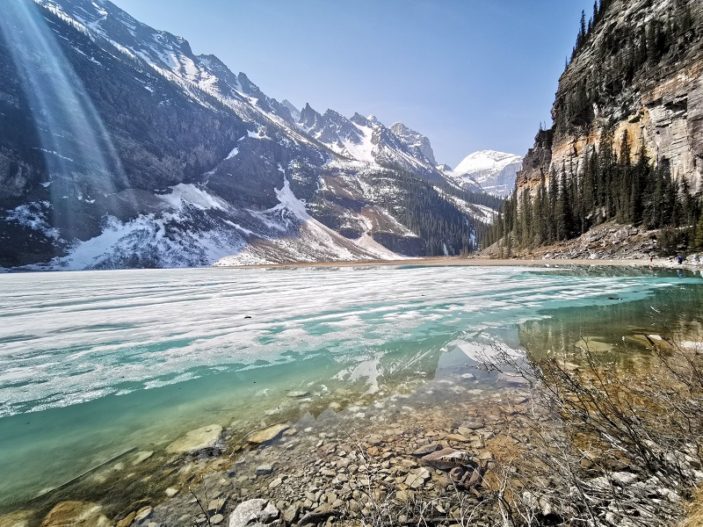
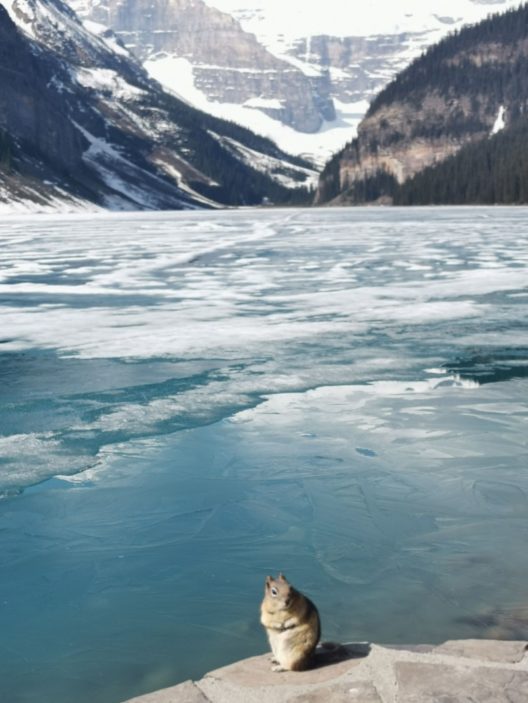
If you’ve timed it right, the lake is either a skating rink (winter) or one of the greatest canoe rides you will ever take (summer). My visit was somewhere in the middle, when the lake was just beginning to thaw out on the fringes of summer. Despite that, I was nowhere near disappointed given the unforgettable walk around the ring of the lake that you can take, really hammering home the divinity of the Canadian Rockies.
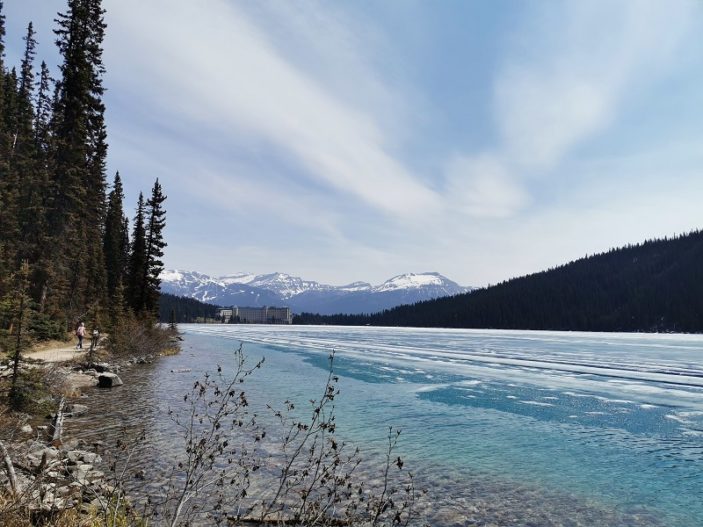
The castle-like Fairmont gives the entire scene an unparalleled sense of character. The hotel looks like it is trapped in a time warp, with its fairy-tale façade standing tall over the lake’s entrance. It’s one of the most soulful scenes of the Canadian Rockies.
Jasper
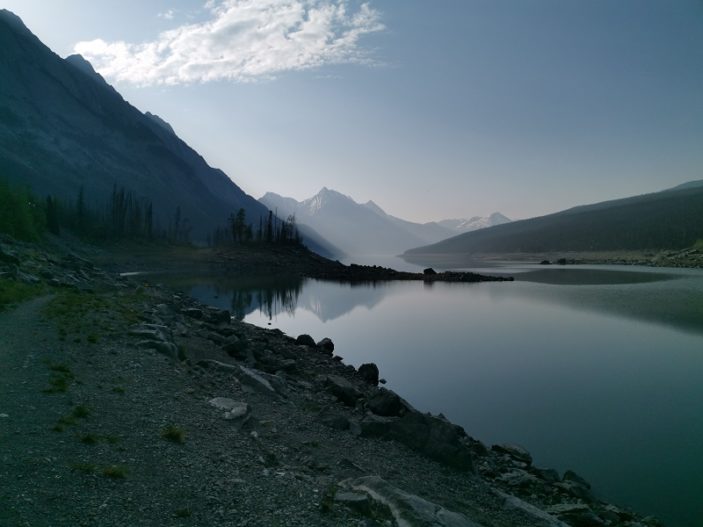
You can’t do the Canadian Rockies and not make a stop in its largest national park. Jasper National Park, dating back to 1907, is one of the most wondrous stretches of wilderness you’ll ever find – untamed and undisturbed, with plenty of jaw-dropping outdoor experiences.
Take up base in the small town of Jasper for a few days and build all your activities from there. There are several adventure operators on the main stretch, so it’s quite easy to launch yourself in to a heart-pumping world of biking, climbing, camping, fishing, hiking, and – in Winter – skiing, boarding, snowshoeing and dogsledding.
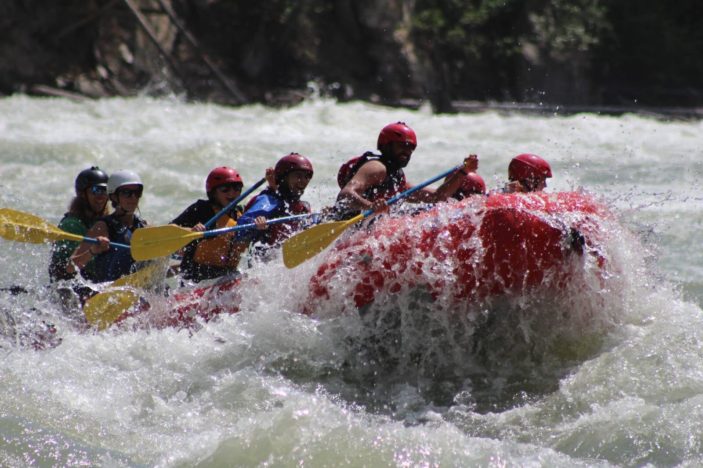
If the weather’s right, don’t miss the opportunity to go white water rafting down the mighty and incredibly scenic Fraser River – just rock up to Pure Outdoors on Jasper’s main street and they’ll set you up on one of their two daily (summer only) trips. And don’t worry, the waters are rough but they only go up to Class III, which is ‘friendly but still challenging’ for beginners (I didn’t fall out, and I’m ridiculously clumsy).
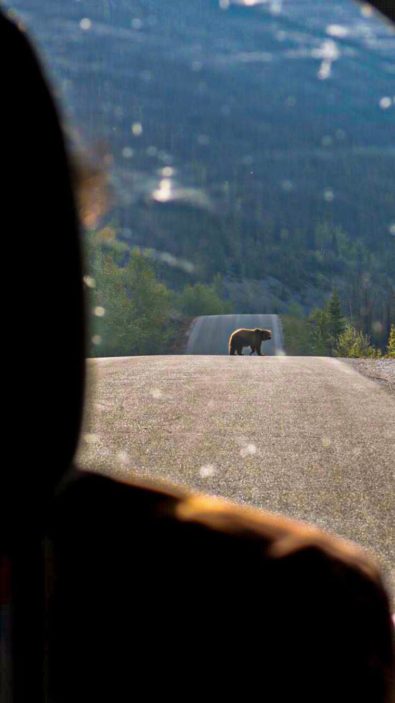
If you haven’t seen many animals – especially bears – on your way around the Rockies, your luck will likely change around these parts. Go driving around the pristine lakes in the morning and you’ll likely spot Grizzlies crossing the road, caribous lazing about, and bald eagles flying overhead. And once you do, you’ll really get a sense of just how wild Jasper National Park is.
Jordan took us out on an early morning drive and it was Medicine Lake where we saw our first Grizzly of the trip. The massive bear, distinctive for the hump on its shoulder, was casually lumbering across the road, minding his own business and not realising that he just prevented us from leaving the van to take a closer look at a nearby bald eagle’s nest.
Jasper National Park is made up of approximately 1,200km worth of hiking trails, so don your best gear and roam to find some of the most beautiful peaks, waterfalls, lakes and alpine meadows in the world. Even if you aren’t that active, there are numerous easy beginner-friendly routes close to town.
Whatever you choose to do with your time in this special part of Canada, just make sure to look up at night. Jasper is the world’s second-largest (and most accessible) Dark Sky Preserve, meaning that the sky is so immaculate that you will be able to see a million stars, the way nature intended.
Athabasca Glacier
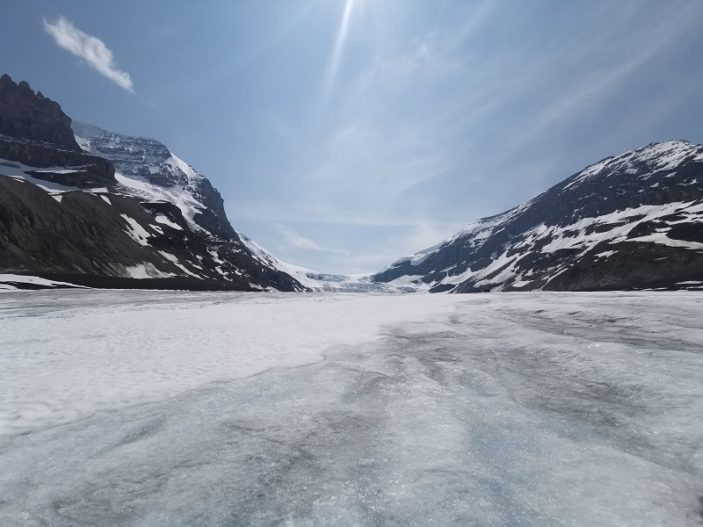
If you’re on the TrekAmerica tour you’ll also stop at the Columbia Icefield and – if you want – participate in one of the tour’s key activities. That is actually hiking the ever-changing Athabasca Glacier, one of six toes of the icefield that’s gradually disappearing due to the insidious and compounded effects of climate change.
Unlike most, who head up to the top via bus on a nearby dirt road, you’ll actually be walking uphill on the snow and ice – single-file behind a trained guide of course. TrekAmerica are one of the few tour operators that offer such an experience. It can be slippery and challenging, but it’s one of the most meaningful and eye-opening experiences you can have here, confronting you with just how drastically our earth has changed.
Jordan told me that as a guide it’s always the highlight of his experience on tour, watching as the group see for themselves the size and scale of the glacier’s change over time.
Mount Robson Provincial Park
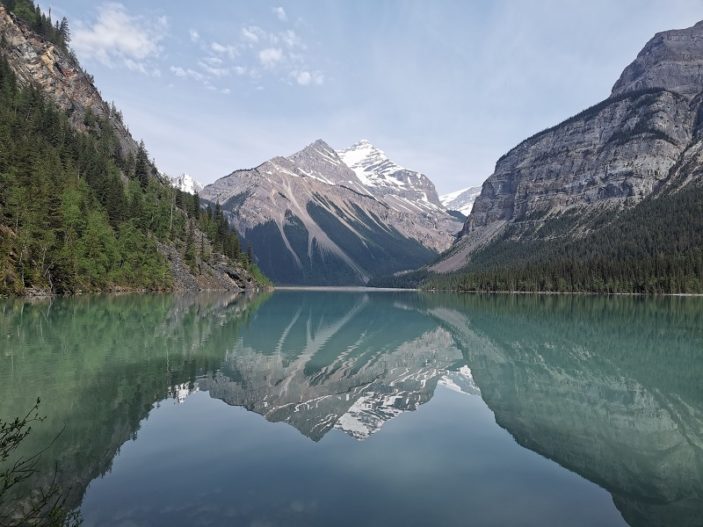
On your way out from Jasper back to British Columbia, make sure you stop at the famous Berg Lake Trail and make your way to Kinney Lake. You’ll be walking alongside a thunderously loud, violent river, but once you reach Kinney it’ll be remarkably peaceful. Chalk up another ‘can never, ever forget this’ moment, especially when you dare head into the waters for the requisite photo and come out shivering from what is easily one of the coldest lakes in the country.
Whistler
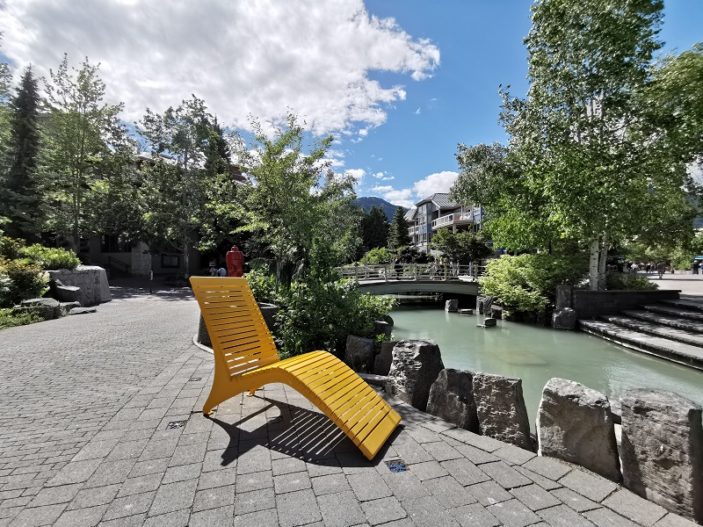
One of the biggest reasons TrekAmerica’s Glaciers and Grizzlies works so well is the smart scheduling. You’ve got Banff as the first major destination, with three nights and several great pocket-stops around it, then you make your way to Jasper for two day of adventure (Glacier walking and white water rafting). Whistler is the last stop of the tour, with two nights letting the now tight-knit group (we were onto the ‘pranking each others rooms’ stage by then) loose on one of the most exciting, action-packed and unique ski resorts in the world.
Whistler is the spot for group travel and, for the tour, it’s a great way to wrap-up – relax during the day and party at sun down. A memorable picnic at Rainbow Park (and a close black bear encounter) in the day led to nightclubs and late-night pizza at night, and somewhere in between we managed to squeeze in the exhilarating Zip Trek, which takes you on a treetop walk and several scenic ziplines, including the longest in North America.
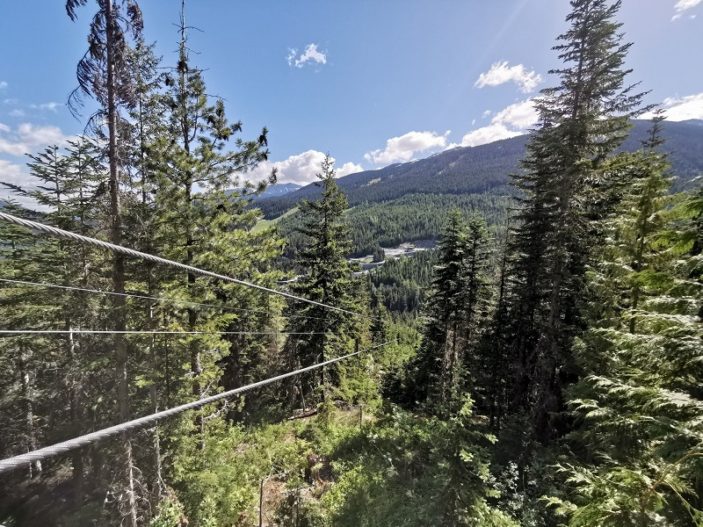
During the day there’s plenty to around Whistler Village. It’s the ideal place for a peaceful stroll and people-watching (hint: the terrace bar at Pangea Pod Hotel is great for that), and the many boutique shops should keep shoppers happy. There’s also the immaculate Audain Art Museum, which hosts incredible First Nations art as well as soulful exhibitions from around the world.
Related: Cornucopia In Whistler: We found one of the world’s best food festivals.
—-
For more information on TrekAmerica and their Glaciers and Grizzlies Plus Tour. plus the Canadian Rockies in general, click HERE.
The writer was a guest of TrekAmerica on their Glaciers and Grizzlies Plus tour. This is not a sponsored post and all opinions are that of the writer’s.
All photos by Chris Singh, shot using the Huawei P30 Pro.
Feature image: Peyto Lake, supplied by Banff Lake Louise Tourism / Credit: Paul Zizka
